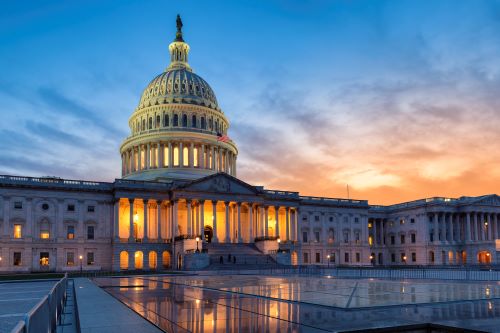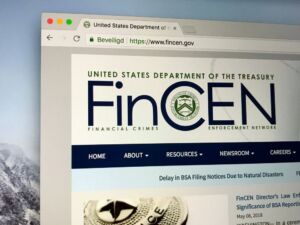Important SECURE Act 2.0 Changes
 At the end of last year, Congress passed the Consolidated Appropriations Act of 2023, a spending bill to fund the federal government. Included within are information on foreign policy initiatives, funding for domestic priorities, and even details on relief spending for disaster areas. An essential component included is the SECURE Act 2.0 (Act). Named after the original 2019 version, the Act provides several important changes designed to expand plan access, increase savings opportunities, and provide new tax benefits and savings for certain businesses. The changes impacting individuals include updated automatic enrollment rules, automatic portability, RMD changes, and long-term care distributions. To help clients, prospects, and others, Whipplewood CPAs has provided a summary of the key details below.
At the end of last year, Congress passed the Consolidated Appropriations Act of 2023, a spending bill to fund the federal government. Included within are information on foreign policy initiatives, funding for domestic priorities, and even details on relief spending for disaster areas. An essential component included is the SECURE Act 2.0 (Act). Named after the original 2019 version, the Act provides several important changes designed to expand plan access, increase savings opportunities, and provide new tax benefits and savings for certain businesses. The changes impacting individuals include updated automatic enrollment rules, automatic portability, RMD changes, and long-term care distributions. To help clients, prospects, and others, Whipplewood CPAs has provided a summary of the key details below.
- Catch-Up Contributions – Employees age 50+ are now able to make a “catch-up” contribution to eligible IRA accounts equal to $1,000. Those age 50+ participating in 401k plans may contribute an extra “catch up” contribution of $6,500 for the tax year 2022, and $7,500 for the tax year 2023. This is on top of the maximum allowable contribution of $20,500 (in 2022) and $22,500 (in 2023). After 2023, these amounts will be increased with inflation. Beginning in 2025, the “catch-up” amount increases to $10,000.
- Automatic Enrollment – Starting in 2025, any business that starts a new 401(k), or 403(b) plan, will be required to automatically enroll eligible employees at a rate of at least 3%. In addition, these plans are required to automatically increase the participant’s deferral rate by 1% for each year until the rate is at least 10%. However, an employer is not permitted to increase the deferral rate above 15%. It is important to note employers that have recently joined multi-employer plans (MEPs) are considered to have established a new plan and are subject to this requirement.
- Automatic Portability – The Act also permits plan service providers to offer automatic portability of retirement savings. When a worker changes jobs often little thought is given to transferring existing retirement savings to the new plan. This feature will help workers keep track of existing savings, and build upon them, by moving assets over expediently. It is expected to limit the number of workers that cash out retirement savings upon changing jobs.
- Required Minimum Distribution (RMD) Changes – The Act also increased the age at which RMDs need to be taken from retirement accounts. The change grants extra time to participants closer to retirement to bolster savings. Beginning in January 2023, mandatory RMDs from retirement plans may be deferred until individual account owners turn 73. Beginning in January 2030, RMDs may be deferred until account owners turn 74. Finally, in 2033, the beginning RMD age is slated to rise to 75 for account owners born in 1958 or later.
- Expanded Part-Time Employee Participation – Similar to prior reforms, the Act expands the opportunity for certain part-time employees to participate in an employer-sponsored plan. It reduces the number of hours required to two years of consecutive service with 500 or more hours each year. This change makes it even easier for long-term part-time employees to participate in the plan.
- Matching Student Loan Payments – The Act will allow employer matching contributions to be made against qualified student loan repayments, in addition to employee elective deferrals. It is important to note, these loan payments cannot exceed the annual maximum deferral limit ($22,500 in 2023). Finally, the participant is required to self-certify that reported loan payments were made.
- Emergency Savings Accounts – Starting in 2024, defined contribution plans will have the option of adding an emergency savings account. These designated Roth accounts will accept participant contributions with a maximum of $2,500 per year. The first four emergency withdrawals are tax and penalty-free. Not only does this create a source of emergency savings, but also encourages plan participation.
- Long-Term Care Distributions – There is a new feature that allows participants to take distributions to pay for certified long-term care insurance. The exception from the 10% early withdrawal penalty is limited to the lesser of the cost of insurance, 10% of the vested account balance, or $2,500 annually.
Contact Us
The SECURE Act 2.0 calls for various changes designed to benefit workers that have just started on the retirement savings journey to those who are nearing retirement age. While the effective date for these changes varies, it is important to consult with a qualified advisor to determine how you will be impacted. If you have questions about the information outlined above or need assistance with a tax or accounting issue, Whipplewood CPAs can help. For additional information call 303-989-7600 or click here to contact us. We look forward to speaking with you soon.
About the Author

Mona Feeley CPA
Being a small business owner through some considerable life challenges has provided Mona the ability to see life and entrepreneurship from a unique perspective. Overcoming those challenges while seizing opportunities and moments that would probably pass others by has also given her an optimistic mindset and a brand of determination that is contagious to her colleagues and her clients.



